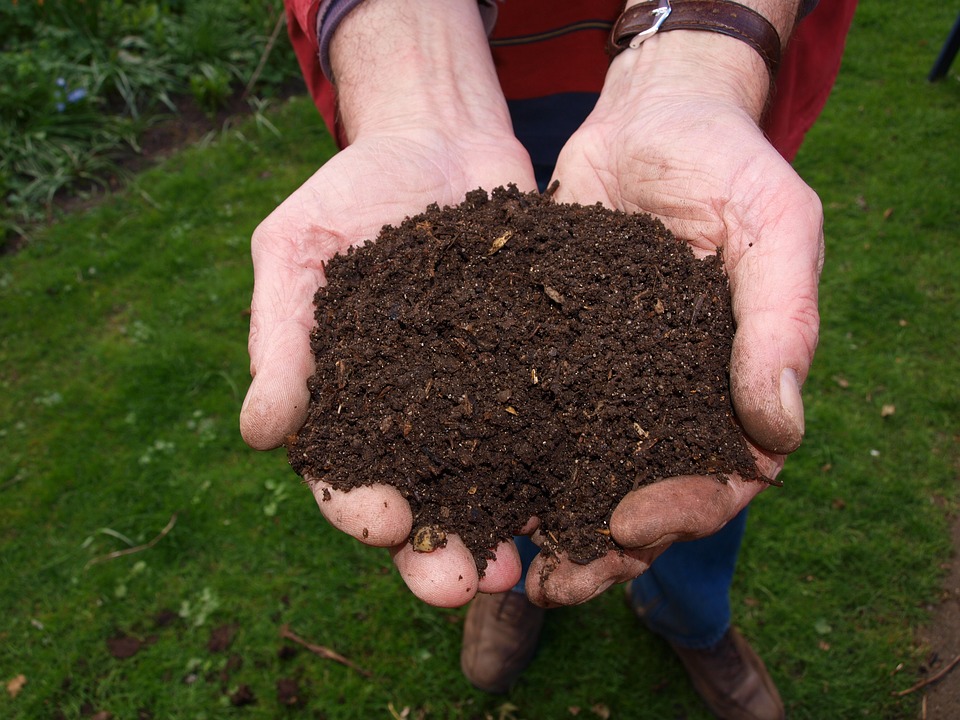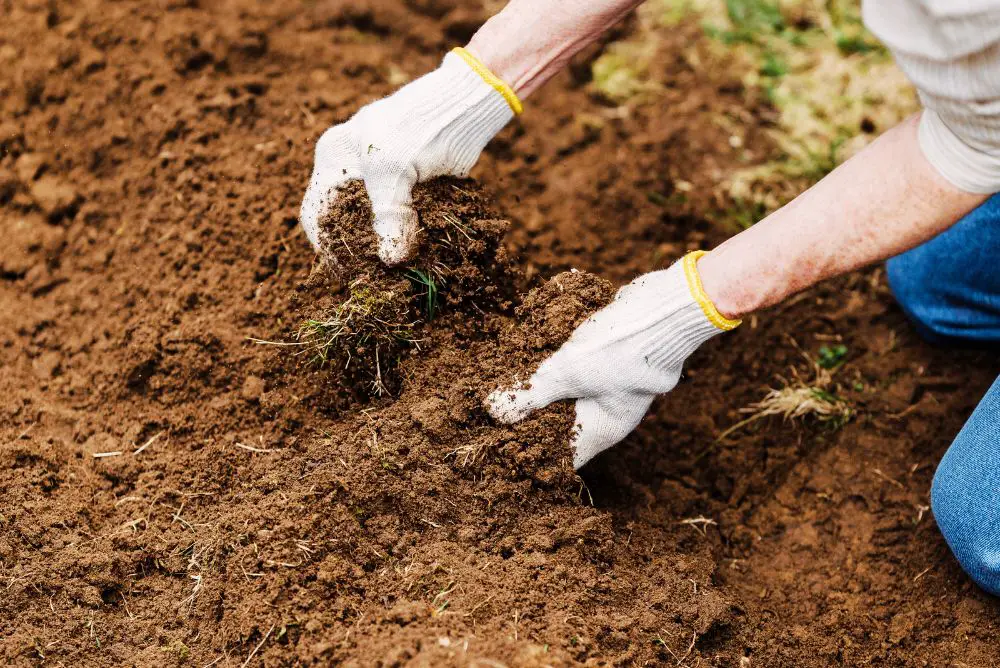As part of your strategy to revitalize sandy soil, adding organic matter is the first step to improvement. A layer of compost, shredded leaves, manure, straw or even weedless grass clippings helps retain nutrients for better nutrient retention.
Organic matter helps sandy soil retain water, as well as add essential nutrients as it decomposes. By contrast, adding sphagnum peat moss, coconut coir or vermiculite to improve moisture retention without providing additional nutrition, organic matter provides the greatest potential.
Add organic matter
Sandy soil may seem dauntingly challenging to amend, but there are ways you can still improve it. Organic matter plays a key role in binding sandy soil together and helping it retain moisture and nutrients, so adding regular additions such as compost, manure or wood chips to garden beds should help maintain healthy soil. When organic material breaks down over time it releases humus which creates new forms of life in your garden beds; adding one organic item annually would be ideal.
As well as adding organic matter, sandy soil requires fertilizing more frequently than other soil types due to rapid nutrient loss and runoff issues. Slow-release fertilizers should be used so as not to waste valuable resources on plant needs while limiting excessive runoff.
Another way of improving sandy soil is planting legumes. Leguminous plants like cow peas, black-eyed peas, alfalfa, clover, lupine and purple prairie clover provide nitrogen to the soil, encouraging healthy root development. Regular planting of these crops also reduces weeds while improving soil structure.
Although certain crops do well in sandy soil, others do not fare as well. Plants requiring lots of water such as corn and melons often find it challenging to grow properly there due to rapid drainage; dehydration occurs quickly due to this quick drainage, leaving these crops struggling against the heat of the sun. On the contrary, carrots and other root vegetables thrive here thanks to their tap roots penetrating deeply into the soil.
Herbs that prefer dry environments, like lavender and thyme, do well in sandy soil. Furthermore, tomatoes and peppers that thrive in warm temperatures grow best on sandy soil because it warms quickly in springtime and holds heat longer than clay or loamy soil. To prevent compacted soil conditions from occurring too rapidly in raised beds to allow adequate drainage – plus you should mulch these beds to shield it from sunlight and heat!
Fertilize
Sandy soils lack organic matter to bind nutrients together and have poor water-holding capacity, making them hard for plants to flourish in. Furthermore, they tend to warm quickly in spring when temperatures increase quickly causing water evaporation that could reach plant roots otherwise. By adding organic matter and fertilizing regularly, sandy soil can be improved enough that more vegetables, flowers and shrubs can grow successfully in them.
To improve sandy soil, you should add organic matter with high nitrogen levels such as composted manure or aged wood chips or bark. Furthermore, consider adding layers of low-nitrogen mulch such as grass clippings, leaves or straw – these layers will help prevent excess water evaporation.
When adding organic materials to sandy soil, it is vitally important that no clay be added as this would alter the balance of its texture, creating an unfavorable environment for most types of plants.
Organic material such as compost or manure are excellent ways to improve sandy soil, with compost being particularly helpful in binding together sandy soil particles and providing essential plant nutrition. If you don’t already have your own compost on hand, garden centers or nurseries may offer it for sale.
coconut coir can also help improve sandy soil. Composed of compressed, dried husks of coconuts, this material binds together sandy soil particles while holding moisture up to five times its weight.
If you are working with salty, saline, or coastal sandy soils, avoid products containing too much salt such as sphagnum peat moss and vermiculite as these contain too much sodium. To test nutrient levels more accurately in your garden soils, purchase organic materials that have been approved as safe by independent laboratories, such as Searles Water Crystals that swell when immersed in liquid, acting like mini reservoirs to help retain moisture for longer.

Mulch
If you are gardening on sandy soil, the good news is that it can still support vegetables and herbs that require regular watering. Unfortunately, sandy soil drains quickly, leading to frequent irrigation as nutrient loss occurs as water washes through it, necessitating slow release fertilizer use as well. Furthermore, its compaction can make working in it more challenging; using a rototiller may prove effective against compacted areas.
As it turns out, improving sandy soil can be accomplished easily and affordably. Addition of organic material such as compost or shredded leaves, grass clippings and manure can help the soil retain moisture better, and applying three to four inches of mulch every spring can also add valuable humus and nutrients while planting winter tares, turnips, buckwheat and lupin cover crops will further break up sand while giving an added boost of nitrogen to your garden soil.
Organic matter amendment of sandy soil helps it retain more moisture, decreasing the need for frequent irrigation and nutrient loss through rain penetration and runoff. Furthermore, adding organic matter makes working the sandy soil easier as well as adding other important amendments like peat moss, coconut coir and vermiculite that provide moisture retention capabilities that enhance sandy soil conditions.
Sandy soil’s large particles don’t provide it with much ability to retain water or nutrients, leaving its passing through quickly without time for absorption by plant roots. Furthermore, warm weather often speeds up soil temperatures which leads to increased evaporation loss of moisture from evaporation; to combat this situation, mulching with materials such as hay straw composted manure or leaves is critical in order to retain the essential moisture content during hot summers while simultaneously adding crucial plant-nourishing benefits.
Grow cover crops
Sandy soils consist of silica particles, and this type of soil doesn’t retain either nutrients or water well. When gardening in such soil, organic matter must be added to help increase both nutrient and moisture retention. Compost, manure, wood chips, straw, shredded leaves or grass clippings will all boost organic matter content of sandy soils and improve their ability to retain both water and nutrients more effectively. When selecting fertilizers to use on sandy surfaces, opt for slow release versions as these won’t wash away as easily than water-soluble types.
Cover crops are an effective way to enhance sandy soil throughout any season, but when it comes to improving sandy soil specifically, choosing the appropriate cover crop can be critical to its improvement. When looking for suitable cover crops for improving sandy soil conditions such as hairy vetch for erosion control or winter rye to ease compaction issues as well as clover as an herbaceous leguminous crop that increases nitrogen levels in your garden bed or planting area – choose accordingly!
Cover crops should be planted either in the fall or spring. When selecting varieties that best suit the conditions in your region, such as mustard or buckwheat for areas with cool-to-cold winters; or oats and rye as perennial plants that will provide ongoing benefits for your garden throughout the year.
Coco coir, made from compressed coconut hulls, can make an excellent cover crop to improve sandy soil and increase its ability to retain moisture. Incorporating coco coir as part of your soil amendment plan requires mixing it at an approximate ratio of 40% coco coir and 60% sandy soil; this allows it to more easily be worked into the ground while still reaping all its beneficial effects – including those provided by microbes and fungi that help bind together its structure. To do so effectively.

